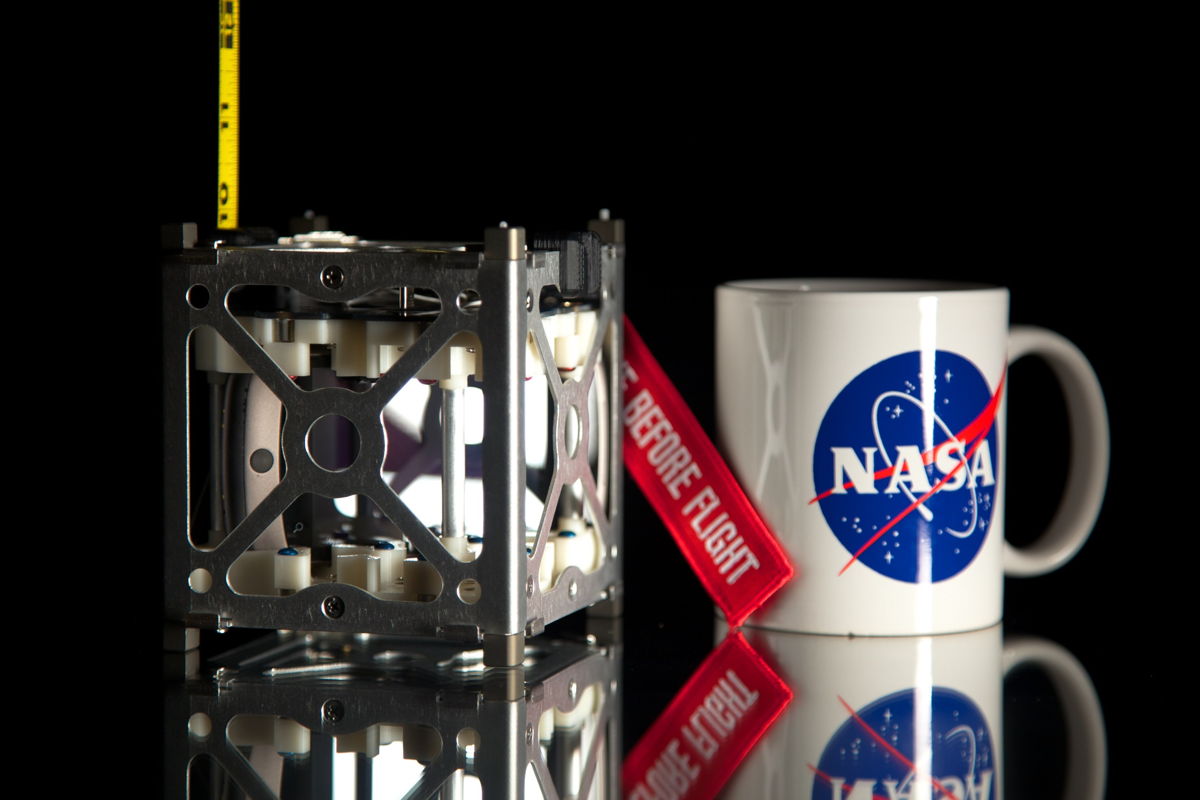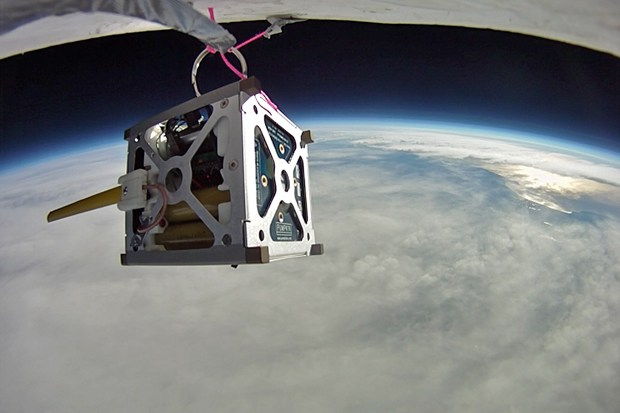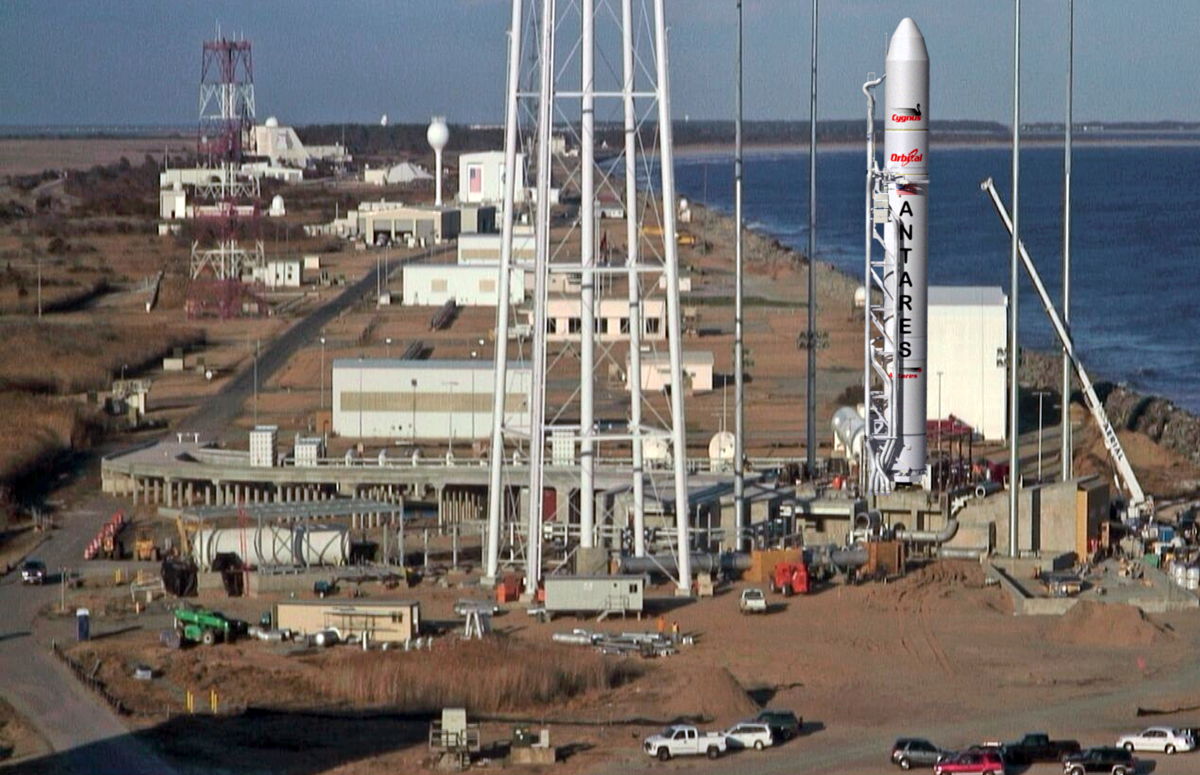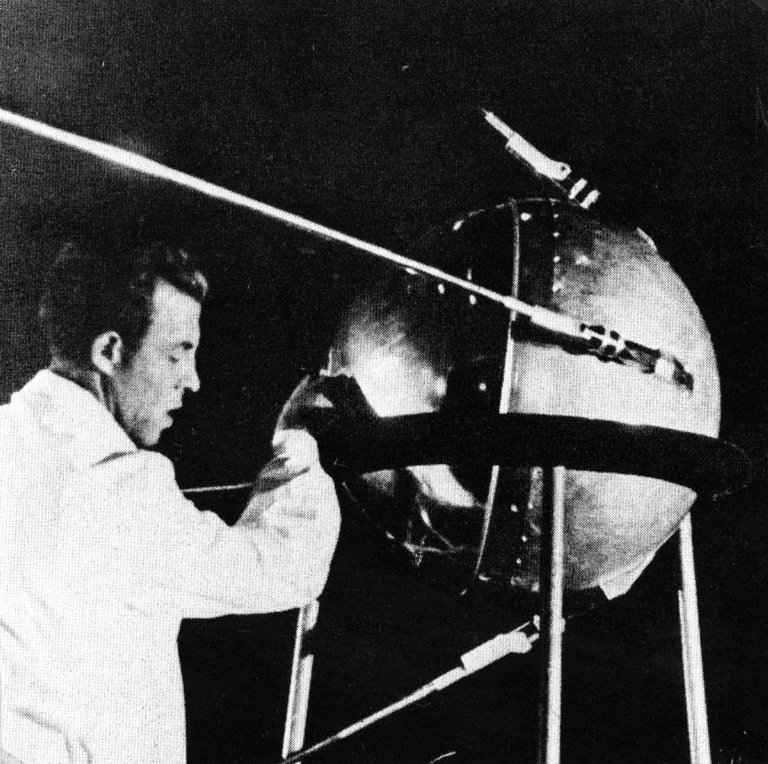
NASA's Phonesat Project Turns Smartphones Into Satellites

NASA engineers are chipping away at how best to lower the cost of their satellites — and one off-the-shelf answer is by using smartphone electronics.
Dialing in on the idea has resulted in the PhoneSat project, a technology demonstration mission using a trio of tiny CubeSat satellitesto be launched next year.
The PhoneSat nanosatellites — each weighing in at just three pounds (1.4 kilograms) – will be ejected into Earth orbit during the maiden flight of Orbital Sciences' Antares rocket. The rocket will launch from the Mid-Atlantic Regional Spaceport , located at NASA’s Wallops Flight Facility in eastern Virginia.
Out-of-the-box

Quite literally out-of-the-box smartphones are imbued with capabilities comparable to a spacecraft's, like fast processors, multipurpose operating systems, miniature sensors, high-resolution cameras, GPS receivers, and several radios.
The three PhoneSats — Alexander, Graham and Bell — will be simultaneously deployed from a rocket-mounted dispenser. The latter two are PhoneSat 1.0s; they are battery-powered and make use of Nexus One smartphone technology from HTC Corp. and Google’s Android operating system.
A beta version of PhoneSat 2.0, Alexander is built around an updated Nexus S smartphone made by Samsung Electronics that runs Google’s Android operating system to provide a faster core processor, avionics and gyroscopes. It has solar cells for energy.
Get the Space.com Newsletter
Breaking space news, the latest updates on rocket launches, skywatching events and more!
The attractive thing about PhoneSat is that it may make people more comfortable with the idea of using something almost directly off the shelf for a space mission, said Andrew Petro, program executive for the Small Spacecraft Technology Program within NASA's Office of the Chief Technologist. “I’m excited about the potential here,” Petro told SPACE.com.
Nontraditional

PhoneSat is one of nine space technology programs in the Office of the Chief Technologist, according to Bruce Yost at the NASA Ames Research Center at Moffett Field, Calif.
Ames is home for a small tiger team of engineers that conceived of, constructed, and tested PhoneSat, working on the project since early 2011, Yost told SPACE.com. "We’re exploring the use of nontraditional hardware and systems providers," trolling for technology beyond the traditional aerospace industry, said Yost, who is manager of the Small Spacecraft Technology Program.
PhoneSat engineers kept the total cost of the components to $3,500 for each of the three prototype satellites in the PhoneSat project. They used only commercial, off-the-shelf hardware and established minimum design and mission objectives for the first flight.
The deployment mechanism is of a size tagged "3U" volume, said Jim Cockrell, PhoneSat 1.0 project manager, "so it holds three CubeSats … all three stacked up into the dispenser." (Each PhoneSats is built to standard dimensions of 10x10x11 centimeters, about 4 inches cubed, or 1U — for unit, he said.)
Citizen exploration
Once in Earth orbit, the PhoneSat Project comes alive. Amateur ground stations will receive health and status information as well as images, uploading packets of data onto amateur-run websites.
An early leader in the PhoneSat concept was Jasper Wolfe, technical lead of attitude determination and control, launch vehicle, at NASA Ames. He underscores multiple benefits in the project — for one, leveraging hardware and software from the non-aerospace industry.
"I see PhoneSat as inspiring a new area of people to get involved in space," Wolfe said. "The actual building of a satellite is something we’re trying to develop and demonstrate as a really cheap and easy thing to do."
The battery-powered PhoneSats will orbit for 10 days or two weeks before re-entering the Earth’s atmosphere, while the solar-paneled PhoneSat 2.0 will have a longer stay in space, said Alberto Guillen Salas, technical lead of communications and electrical design of the PhoneSat Project.
The mission will demonstrate use of small satellites for space commerce, educational activities and citizen exploration … all well within the reach of ordinary Americans because of the lower-cost, commercially available components involved, said Michael Gazarik, director of NASA’s Space Technology Program at NASA headquarters in Washington.
Oriol Tintore Gazulla, technical lead of software and mechanical design for the PhoneSat Project at Ames, said next year’s mission is likely to be a forerunner of things to come. "This is a first step. Maybe in the future we could think of going farther … going to the moon."
Leonard David has been reporting on the space industry for more than five decades. He is a winner of last year's National Space Club Press Award and a past editor-in-chief of the National Space Society's Ad Astra and Space World magazines. He has written for SPACE.com since 1999.

Join our Space Forums to keep talking space on the latest missions, night sky and more! And if you have a news tip, correction or comment, let us know at: community@space.com.

Leonard David is an award-winning space journalist who has been reporting on space activities for more than 50 years. Currently writing as Space.com's Space Insider Columnist among his other projects, Leonard has authored numerous books on space exploration, Mars missions and more, with his latest being "Moon Rush: The New Space Race" published in 2019 by National Geographic. He also wrote "Mars: Our Future on the Red Planet" released in 2016 by National Geographic. Leonard has served as a correspondent for SpaceNews, Scientific American and Aerospace America for the AIAA. He has received many awards, including the first Ordway Award for Sustained Excellence in Spaceflight History in 2015 at the AAS Wernher von Braun Memorial Symposium. You can find out Leonard's latest project at his website and on Twitter.









